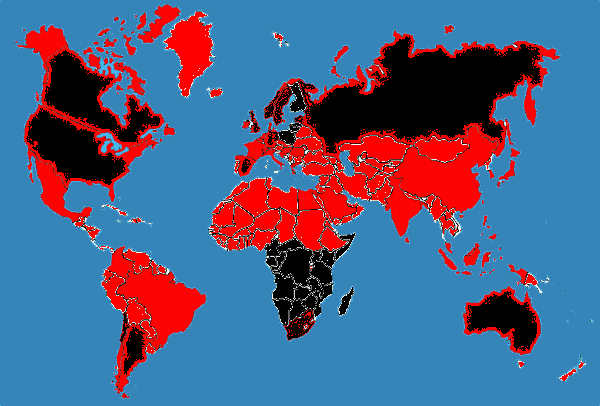|
Clostridium botulinum spores are most commonly found in oxygen-poor environments with low acidity. As a result, they can be found in soil and marine environments all throughout the world. Because of this, C. botulinum may also be found in any type of food which has contact with the soil; including vegetables, fruits, and sometimes even meats. Another common habitat for Clostridium botulinum is in improperly preserved foods. This is usually a result of home canning, curing, or fermentation. If food is preserved wrong, there is a possibility that the regular spoilage bacteria will be destroyed, resulting in a perfectly uncompetitive environment for C. botulinum to grow and thrive. Map created with information found in Louis Smith's book, "Botulism." Countries in black have recorded incidences of outbreaks of C. botulinum. But don't be fooled -- strains can exist just about anywhere in the world, and not everything is recorded. The reason why C. botulinum can live in so many places is because of all the changes it has gone through -- check them out on the Adaptations page! |
